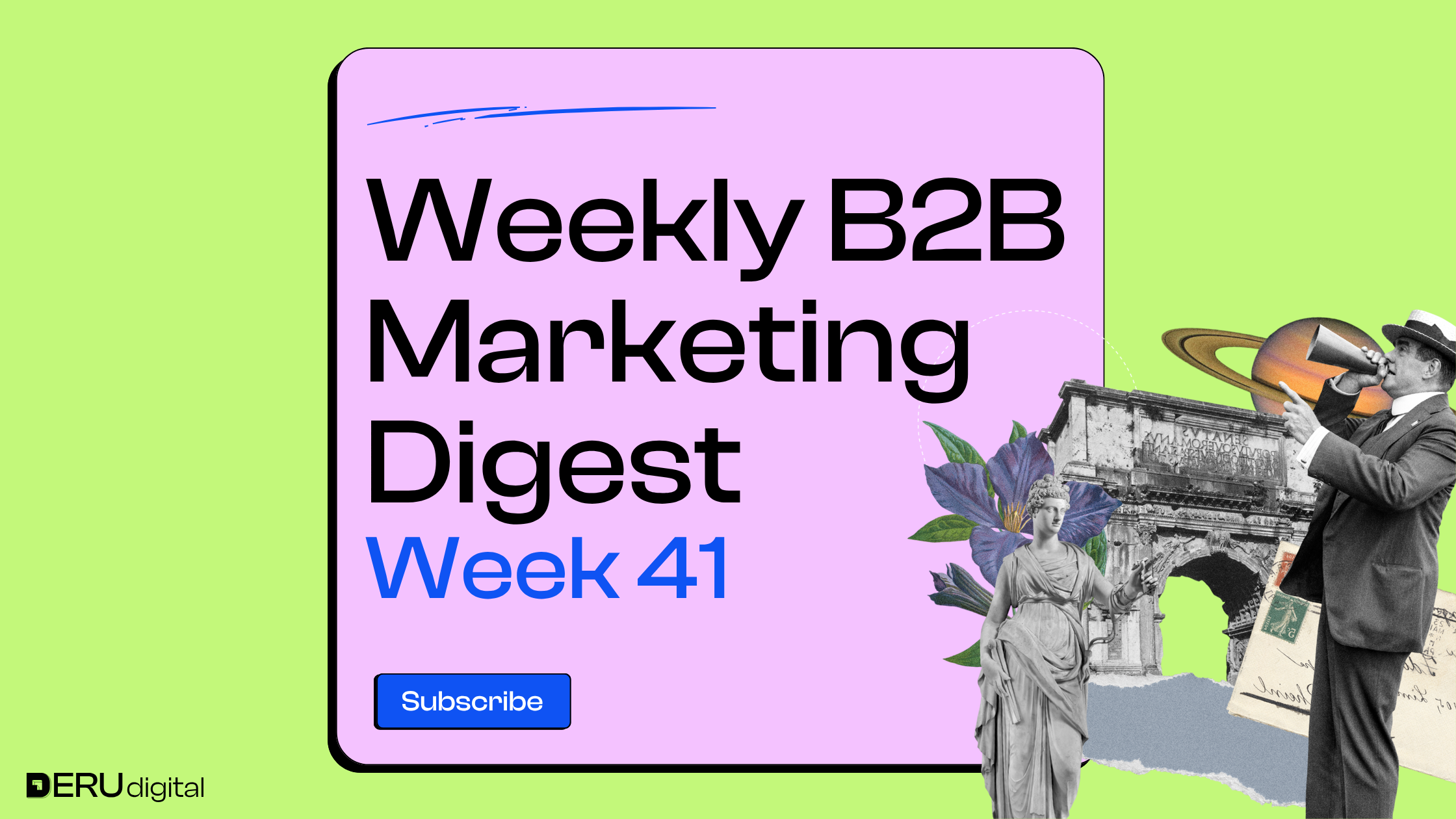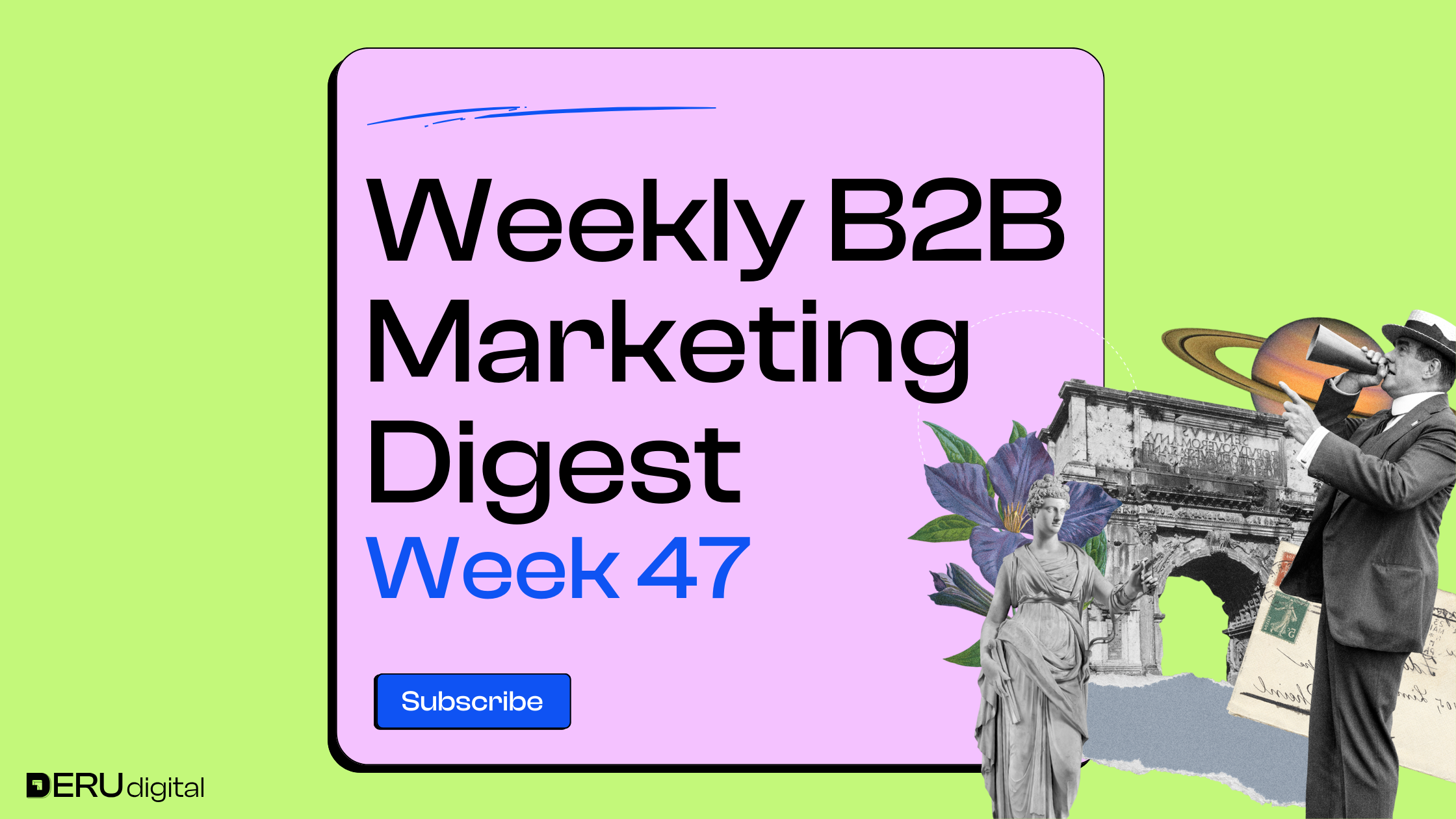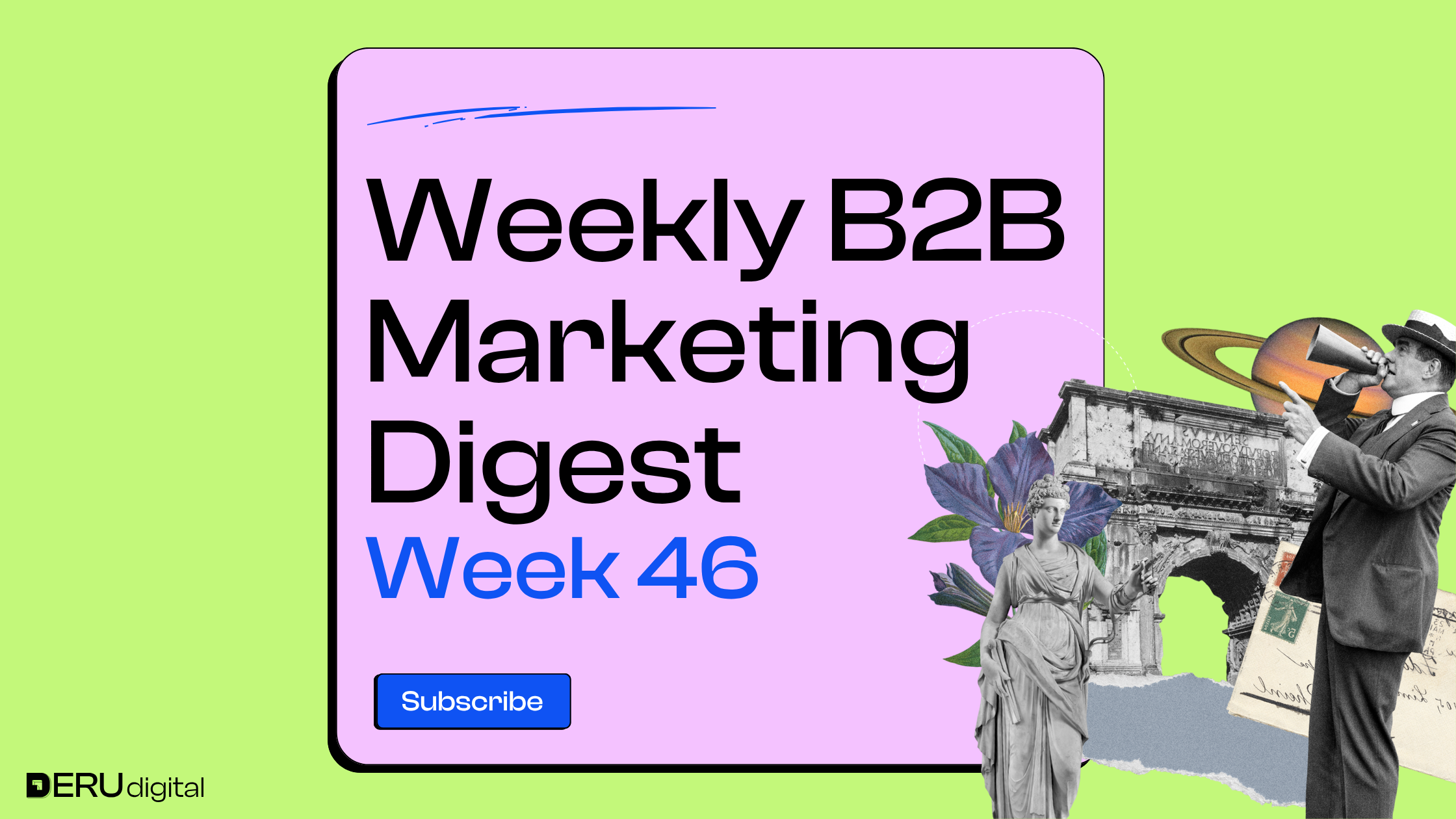Our new milestone!


INSIGHTS FROM EXPERTS ON LINKEDIN
I joined Liam Bartholomew on the ‘Marketing Dillemas’ podcast and talked about – how do you stay laser-focused on your ICP without missing out on future buyers? I shared how, when I switched jobs, I suddenly became the perfect customer for a company I’d only seen ads for a year earlier. It’s a great reminder that reaching beyond your current audience can really pay off – today’s “out of market” contact might be tomorrow’s buyer.
Robbert Smit just released a free script that automates Google Ads auction insights – something the API doesn’t currently allow. It tracks competitors’ metrics like impression share, top-of-page rate, and overlap rate, then updates charts daily for an almost fully automated dashboard. To get it, drop a quick comment on the post or connect with him directly.

Kees Henniphof highlights how “shadow design”, teams using off-brand tools like Canva, weakens global brand consistency. His solution, GraFx Experience, gives local teams creative freedom within centralized brand controls, complete with smart templates and automated localization. It’s designed to help global brands move faster while keeping every visual on-brand.

Jonathan Bland just published a massive 128-page Modern Way B2B SaaS Brands Run LinkedIn Ads guide, packed with insights from six years of managing millions in ad spend. It covers everything from targeting and creative strategy to measurement, optimization, and playbooks for real execution. Built for both practitioners and strategists, the guide aims to help marketers run smarter, more effective LinkedIn campaigns with more updates already on the way.
Jessie Healy 
Theresa Sophie Bode warns marketers not to celebrate too soon if their dwell time suddenly jumps next week – it’s just LinkedIn updating how the metric is calculated. The platform is now tracking attention more accurately by fixing past undercounting and adding smarter signals to measure viewing time. The change takes effect on October 16 and will backfill six months of data, meaning your numbers might look better, but your ads didn’t magically improve overnight.
WHAT'S NEW IN THE INDUSTRY
Most B2B marketers focus on “Target Buyers,” the product experts who click, download, and engage, but new research with Bain & Company shows that half the story is missing. “Hidden Buyers,” like those in finance, legal, or procurement, quietly influence or veto deals based on risk and trust, not features. Ignoring them leaves nearly half of the shortlisted vendors stuck in limbo, meaning marketers need to build trust and credibility, not just push product specs.

Google Ads has added image quality recommendations to help advertisers boost performance. The tool scans creative assets, flags low-quality visuals, and suggests fixes like background color edits right in the dashboard. It’s a small update but a helpful one. Cleaner visuals can mean better engagement and stronger ad delivery across Google surfaces.

Google quietly added a “Campaign Type” field to its Channel Performance report, hinting that visibility might soon expand beyond Performance Max campaigns. This could bring Demand Gen and other campaign types into unified reporting, giving advertisers a fuller picture of performance across channels. It’s a behind-the-scenes change, but one that points to Google’s ongoing push toward cross-network transparency.

Google has made its Model Context Protocol (MCP) Server for Ads publicly available on GitHub, letting AI apps access and analyze Google Ads data using natural language for the first time. The read-only release allows developers to integrate AI systems for diagnostics and reporting, making it easier to pull insights from accounts securely. Down the line, future versions could even support AI-driven optimization or campaign management.
Google Analytics now lets advertisers automatically pull ad cost data from Meta and TikTok, giving a unified, real-time view of spend across platforms. The integration supports up to 24 months of historical data and keeps ongoing updates without manual uploads. This makes it easier to compare campaign ROI, reduce data silos, and see a full picture of cross-platform performance.
That’s the scoop for this week! If you found this valuable and any useful insights caught your eye, feel free to share them with your network.
Until next week!



